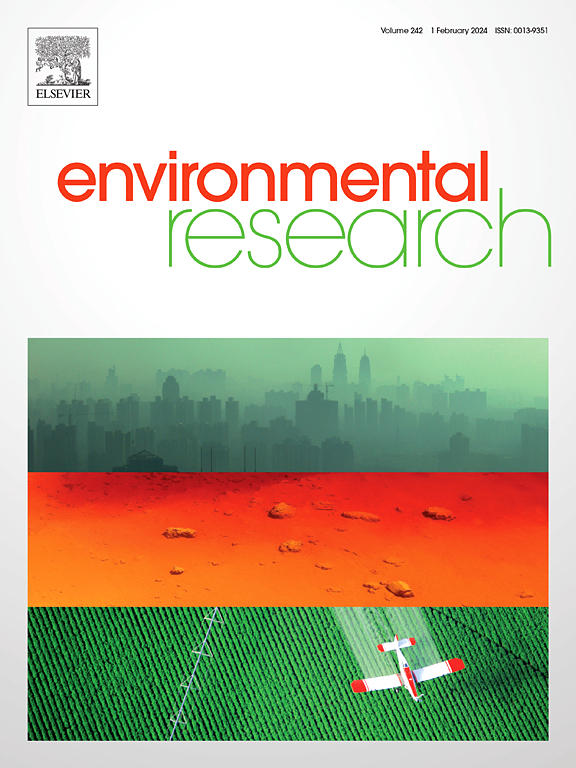Ecotoxicological assessment of different choline chloride-based natural deep eutectic solvents: in vitro and in vivo approaches
IF 7.7
2区 环境科学与生态学
Q1 ENVIRONMENTAL SCIENCES
引用次数: 0
Abstract
Natural Deep Eutectic Solvents (NADES) have emerged over the last decade as a promising alternative to organic solvents. NADES are mixtures of two or more natural components interacting each other by hydrogen bonds to form a supramolecular mixture. Efforts have focused on demonstrating their lack of toxicity by studying the responses of different taxonomic groups. In this study, fish cells (RTG-2 line) and freshwater invertebrate embryos (Physa acuta) were used for the ecotoxicological assessment of seven choline chloride (ChCl)-based NADES. Three organic acids and four alcohols were used for the preparation of the NADES investigated. In a first step, the in vitro cytotoxicity of a single exposure to each NADES component, binary mixtures of their corresponding components and the prepared NADES were evaluated. The rank order of in vitro cytotoxicity of the individual components was: organic acids > ChCl > alcohols. NADES produced equal or lower cytotoxic effects than the corresponding mixtures, suggesting that NADES have their own toxicological behaviour, possibly supported by the maintenance of their supramolecular structure up to certain aqueous dilutions. Furthermore, the in vitro assessment showed that NADES prepared with acids were more cytotoxic than NADES prepared with alcohols, which was confirmed by the in vivo assessment. NADES prepared with acids produced embryo lethal effects from 0.025 % at short exposures (48h). For NADES prepared with alcohols embryo toxicity was found from 0.2 %. From our results, it can be concluded that ecotoxicological assessment can help in the selection of component combinations for the design of safe NADES.

不同氯化胆碱天然深共晶溶剂的生态毒理学评估:体外和体内方法。
近十年来,天然深共晶溶剂(NADES)作为有机溶剂的一种很有前途的替代品而出现。NADES是两种或两种以上天然成分的混合物,通过氢键相互作用形成超分子混合物。努力的重点是通过研究不同分类群体的反应来证明它们没有毒性。本研究采用鱼细胞(RTG-2系)和淡水无脊椎动物胚胎(Physa acuta)对7种氯化胆碱(ChCl)基NADES进行了生态毒理学评价。用三种有机酸和四种醇制备了所研究的NADES。在第一步中,评估了单次暴露于每种NADES成分、其相应成分的二元混合物和制备的NADES的体外细胞毒性。各组分体外细胞毒性大小顺序为:有机酸、ChCl、>、醇类。与相应的混合物相比,NADES产生了相同或更低的细胞毒性作用,这表明NADES有其自身的毒理学行为,可能是由于其超分子结构维持到一定的水稀释度。此外,体外评价表明,酸制备的NADES比醇制备的NADES具有更大的细胞毒性,这在体内评价中得到了证实。用酸制备的NADES在短时间(48h)暴露时产生0.025%的胚胎致死效应。用酒精制备的NADES从0.2%开始出现胚胎毒性。从我们的研究结果可以得出结论,生态毒理学评价可以帮助选择成分组合来设计安全的NADES。
本文章由计算机程序翻译,如有差异,请以英文原文为准。
求助全文
约1分钟内获得全文
求助全文
来源期刊

Environmental Research
环境科学-公共卫生、环境卫生与职业卫生
CiteScore
12.60
自引率
8.40%
发文量
2480
审稿时长
4.7 months
期刊介绍:
The Environmental Research journal presents a broad range of interdisciplinary research, focused on addressing worldwide environmental concerns and featuring innovative findings. Our publication strives to explore relevant anthropogenic issues across various environmental sectors, showcasing practical applications in real-life settings.
 求助内容:
求助内容: 应助结果提醒方式:
应助结果提醒方式:


